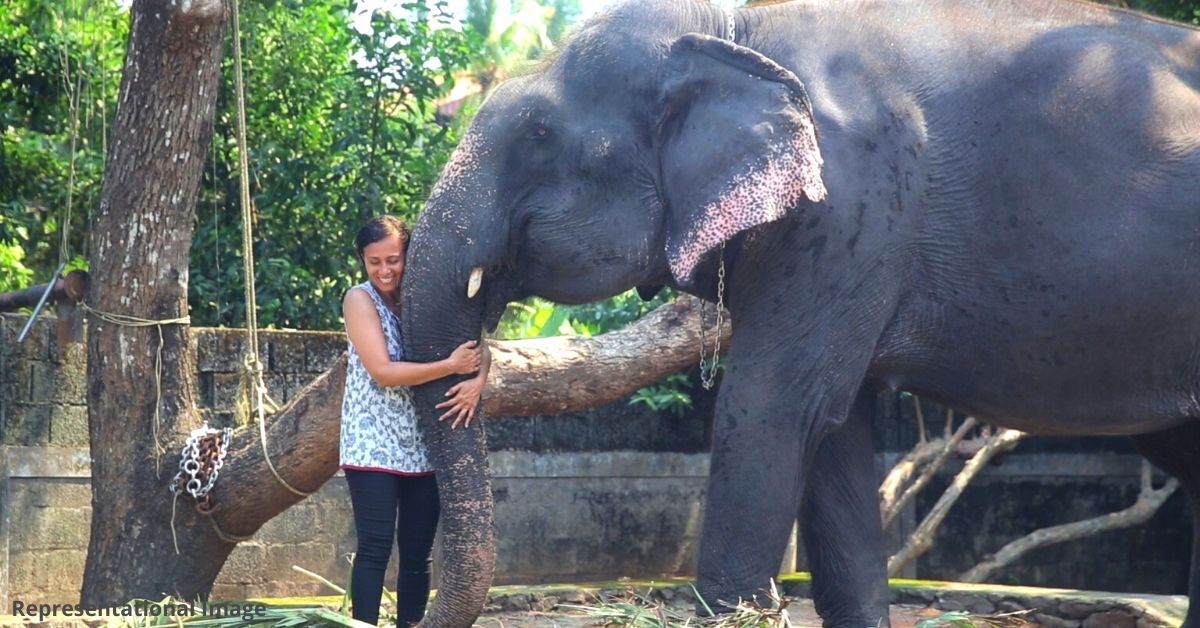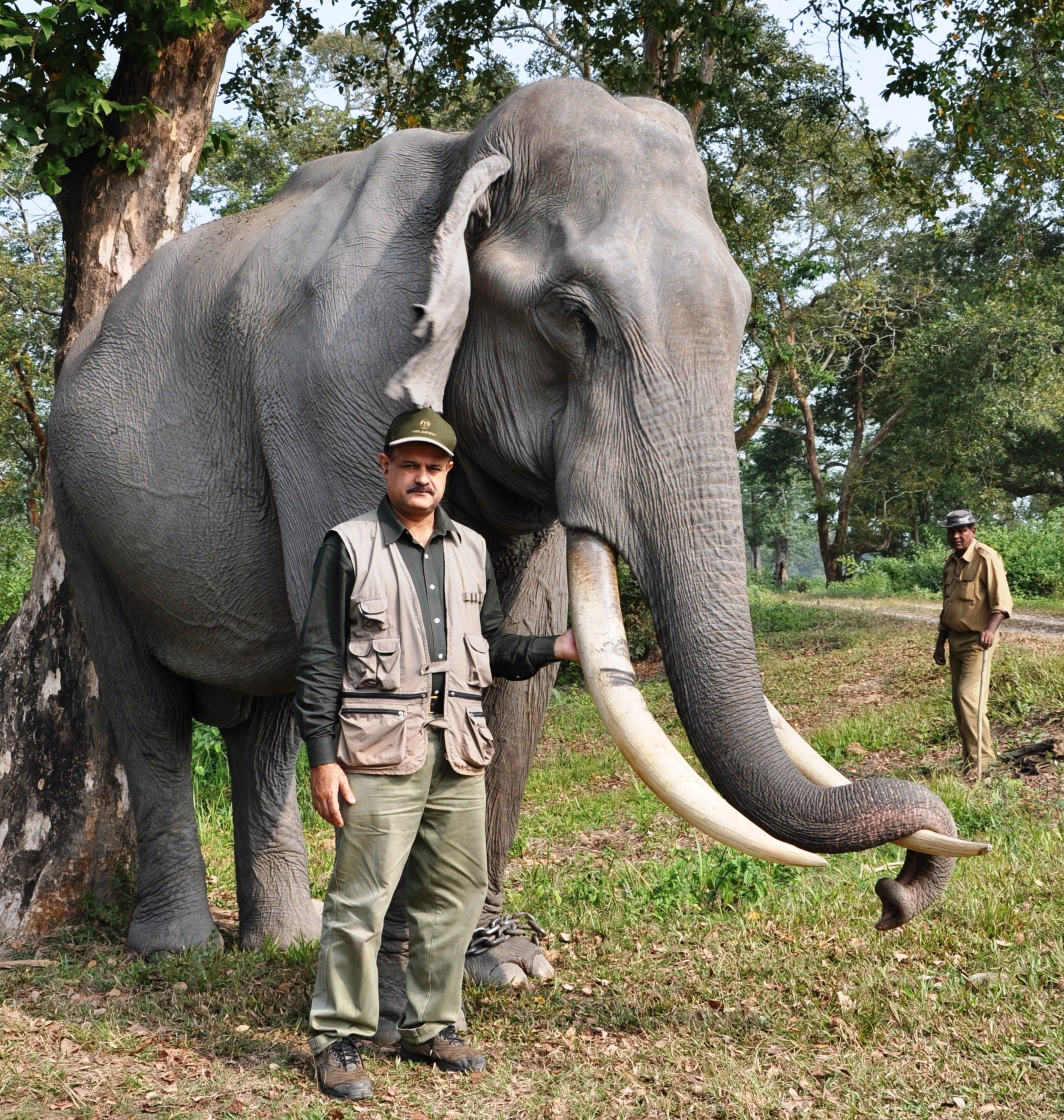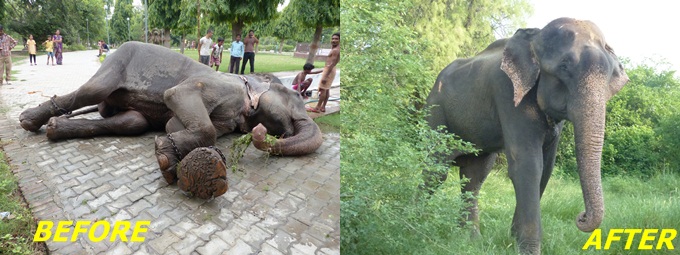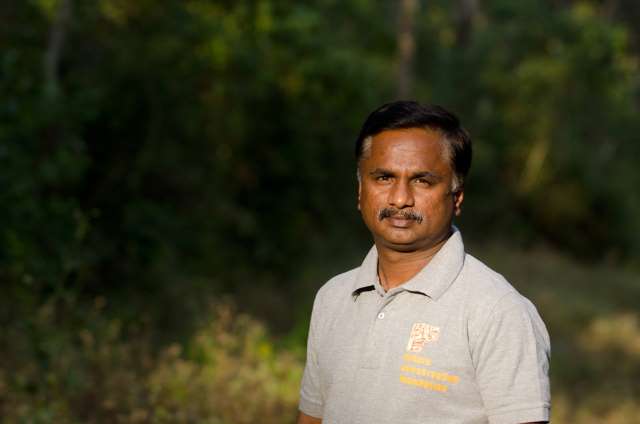On Ganesh Chaturthi, Meet 5 Heroes Bringing Tears of Joy & Love to Elephants
"When the spiked shackles were cut from his legs, the relief brought tears to his eyes. His rescuers have tried to ensure that he never sheds a tear again."

The auspicious occasion of Ganesh Chaturthi is a good reminder of the cultural significance of elephants in the lives of many Indians. This also makes it an excellent reason why we must remind ourselves of the need to conserve them.
Although elephants are accorded a high status in the Wildlife Protection Act (1972), as Schedule-I species, according to multiple news reports there were only around 27,000 wild elephants remaining in 2017, as opposed to a million a decade prior. This is a figure that should worry not just lovers of wildlife, but also millions of citizens who worship the elephant.
To inspire you and give you some ideas about how you can help, here are five instances of people going out of their way to show elephants the kind of love, respect, care and reverence they deserve.
Dr Kushal Konwar Sarma, Elephant Doctor
For over three decades, Dr. Kushal Konwar Sarma hasn’t taken a day off from his veterinary duties, and treated 700 elephants and bulls every year. It is the memory of losing Lakshmi, the elderly elephant Sarma fell in love with as a child in his ancestral village of Barama village of Assam’s Kamrup district, that inspired him to become a vet.
“From tranquilising and capturing 139 rogue jumbos to rescuing and treating hundreds of captive and injured elephants over the years, Dr Sarma has contributed to the conservation of the Asian Elephants in India. Notably, he holds a world record for this feat,” reports The Better India. To prevent human-elephant conflict, he persuades people to adopt bio-fencing rather than setting up protection traps.
Bio-fencing means growing fruit-bearing trees, which ensure that the jumbo is well-fed and wouldn’t need to rampage the property, and thorny varieties, which keep them at bay. Despite coming face to face with death multiple times, he continues to work with elephants from close quarters.

Wildlife SOS and Raju
Raju, a gentle pachyderm who hit 50 in 2014, suffered abuse all his life. Captured as a baby, he was a captive elephant who had lived under 27 different owners. He had never seen life without chains around his legs. He was used as a prop to beg for alms from passers-by in many small towns in Uttar Pradesh.
His owners could not afford the cost of feeding him, and hence he was forced to eat paper and plastic. That’s when a 10-man team of vets and wildlife experts, alongside 20 forest department officials, rescued Raju from his owners.
When the spiked shackles were cut from his legs, the relief brought tears to his eyes. His rescuers have tried to ensure that he never sheds a tear again. Raju’s former owners launched a legal battle to reclaim their ownership, but the court sided with the rescuers, i.e. Wildlife SOS, and granted custody to the latter. Raju is one of 18 elephants who live in the Elephant Conservation and Care Centre in Mathura.
You can also read about the first water clinic for elephants they started here.

Anand Kumar, Saving Elephants With Mobile Phones
A wildlife conservationist, Ananda Kumar came up with an innovative solution to resolve man-elephant conflict in the Valparai plateau of Tamil Nadu – using a simple mobile phone.
The key to this effort was tracking the elephant and letting people know of its presence to avoid any conflict. With assistance from locals and the state government, he implemented a solution where the location of the elephant was shown on TV as a ticker crawl, which helped people to be aware of the elephant presence and plan their outdoor activities in a more informed way.
But what about the people already out in the field? Kumar started a mobile SMS service where the users are notified via text messages about the elephant presence in a particular area. The messages are sent in both English and Tamil.
“And for those who did not even have a mobile phone or were out of the network area, we installed lights. These lights blink whenever there is an elephant in a 2-km radius,” says Kumar. Before the implementation of this service, Valparai plateau in Tamil Nadu recorded an average three deaths annually due to elephant-human encounters. After this programme, the average number of deaths has gone down to just one per annum.

Parbati Barua, the Lady Mahout
Meet Parbati Barua, an Assamese mahout (trainer) who tames rogue elephants, uses ash instead of toothpaste and sleeps inside a tent on a simple mattress without a pillow alongside her tools.
At age 14, she caught her first wild adult tusker in the Kachugaon forests in Kokrajhar district. Since then, she has lived and worked amidst her beloved elephants.
Catching a wild elephant is a high risk profession. They are captured by throwing a lasso around their heads. Training them is a very slow process. It takes about six months of gentle coaxing to win them over, notes Women Feature Service.
“Parbati’s three pachyderm daughters are Lakshmimala, Aloka, and Kanchanmala. The trio and a team of coworkers lead an unusual and adventurous life. Different states like Bihar, West Bengal, and Assam request her help in tackling rogue tuskers or tend to those who are injured/ailing. She is consulted on elephant management policies, in controlling capturing wild herds, driving out wild herds from urban areas, and training mahouts,” reports Women Feature Service.
Tenzing Badosa, Elephant-friendly organic tea farm
Tenzing’s two farms in Bodoland territorial area of Kachibari village in the Udalguri district of Assam are certified as the world’s first elephant-friendly farms.
In the buffer zone, which is the area at the end of his farm from where the jungle begins at the Bhutan border, Tenzing does not cut down the trees or start a fire.

Instead he has planted bamboo trees on which the wild elephants feed. He has also not put any barriers in and around his plantation, so that the wild animals from the jungle can freely move in his farm. At times, you can see at least 70-80 wild elephants in his farm. Hornbills, wild pigs, deer, peacocks and a variety of birds are also a common sight there.
“The certified elephant-friendly tea is sourced from plantations that meet high standards for protection of elephant habitats and water resources, reducing human-elephant conflict, reducing barriers to elephant movement between habitat areas, elimination of electrocution risks from fencing and power lines, elimination of drainage ditch hazards and elimination of risk of poisoning of elephants,” notes an expert speaking to The Telegraph.
(Edited by Gayatri Mishra)
This story made me
- 97
- 121
- 89
- 167
Tell Us More
We bring stories straight from the heart of India, to inspire millions and create a wave of impact. Our positive movement is growing bigger everyday, and we would love for you to join it.
Please contribute whatever you can, every little penny helps our team in bringing you more stories that support dreams and spread hope.



















